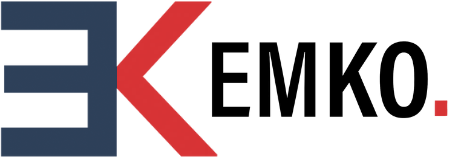Company Culture: Creating a core competency out of your firm’s intellectual capital
A P&L can only shed so much light on a company’s costs and areas for potential growth. It may seem common nature to evaluate financials in order to identify key areas for cutting costs and growing the bottom line; however, the largest area for potential development may actually be sitting in the desks next to you. In line with the old school business adage ‘people are the greatest asset,’ recent studies have demonstrated that corporate culture and its effect on a firm’s intellectual capital can have a great impact on profitability. Below are 5 key ways that demonstrate how focusing on a positive, encouraging, and team-oriented culture can help increase net income.
1) Accountability Increases Productivity
When employees feel like management has given them more ownership over their work, they feel more accountable for their actions and take more pride in their work product. This not only leads to higher quality work, but also helps to improve organizational citizenship.
2) Saving Costs by Reducing Turnover
Employee turnover is an extremely expensive firm cost; Studies show that every time a business replaces an employee, it can cost as much as 6 to 9 month of that employees salary. That racks up to a $20,000 to $30,000 price tag for an employee salaried at $40,000.
Firms with high employee turnover may be seeing great detriment to their bottom line. Studies show that culture is one of the top three reasons why people quit their job, thus demonstrating the correlation between culture and turnover costs. Working to improve company culture and employee happiness can help to reduce employee turnover and thus increase the bottom line.
3) Independence Requires Less Management
A strong company culture supports employees and encourages them to be driven, self-sustaining, and productive. When your employees are happy and accountable for their actions, they require less management, which can significantly cut down on managerial level wage expenses.
4) Cohesive Team Collaboration
Team bonding experiences can be extremely beneficial to increasing profitability. It is often assumed that friendships in the workplace can get in the way of productivity; however, a teamwork culture can help create a collaborative work environment where there is increased effectiveness in employee communication.
A cohesive culture also helps employees see the bigger picture. It drives employees to work with team goals in mind, in turn increasing overall efficiency. When company employees operate independently, they may be more focused on their own goals, their own vacation days and their own way to stand out to management. An employee mindset that doesn’t solely focus on individual needs will allow for more concentration on goals regarding the entirety of the company.
5) Employee Engagement Boosts Performance
19% of the US workforce is actively disengaged at work and it costs $300 billion a year in decreased employee performance. The term “actively disengaged” describes employees who are disconnected and unenthused by their work. Not only are they less productive when they are at work, but they are also absent from work more than their engaged peers. Disengaged employees have an average of 4 more missed days of work per year than engaged employees. When there are a number of disengaged employees at a company, the amount of extra missed days can be detrimental to the bottom line.
There are a number of other intangible ways that culture can impact the bottom line. In a general sense, happy employees are more productive, feel more accountable, feel more attached to their work, miss less days of work, and take more pride in their work product. Employees are a firm’s greatest assets; putting time and effort into creating a company culture that empowers, enlightens, and enables employees can increase profitability for the bottom line and provide the company with a unique core competency.

